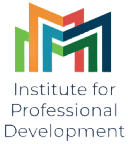by Beth Schaefer
IPD Director
“Should I Stay or Should I Go Now?
If I go, there will be trouble….
And If I stay it will be double…”
by, ironically enough, The Clash
If you have been reading The Great Resignation/Transformation series, you have already done the following to assess your current career situation:
- Researched that The Great Resignation has created demand for your job
- Determined what you want out of a role (12 Questions to Define Your Career Wants and Needs)
- Calculated the potential to gain more salary, fringe benefits, or intangible job satisfaction elsewhere (Use this form to tally your current benefits)
- Ascertained if your burnout is directly related to your current organization (Quiz: Do You Work for a Toxic Organization?)
And based off that analysis, you have determined that your career is best served by making a move to a new organization.
In addition to the assessments listed above, take these additional actions to ensure a smooth career move:
Research compensation for the role you want in the area/region you wish to work.
Define your “workplace self.”
Take 15 minutes every Friday to write down what parts of your job that week were the most satisfying.
- Watch for patterns so you can look for more of that type of work in your new role.
- Use this information to craft questions you can ask when an employer says, “What do you need to know about us?”
- And, if asked, “What do you like about your current role?” you will be ready for that too.
Do the list of 3’s. For each of the following questions, write down your top 3:
- What 3 things about the work you do now generate passion and excitement?
- What are your top 3 technical skills?
- What 3 adjectives would your co-workers use to describe you?
- What are your top 3 workplace skills or fields of expertise?
- What are your 3 biggest workplace contributions in the past year?
Craft your story even though your resume is a necessary tool; it is not your whole story.
Look at the parts that make up your whole:
- You are not just your job title.
- Look at your history of projects; see how they add to your story.
- Look at who is in your network; see how they connect to tell your story.
- Create a list of work anecdotes that demonstrate your desirable co-worker traits that will transfer to any situation or role.
Build your brand about your “workplace self” using your story pieces.
Sum up your story:
- Write your 1-paragraph career story.
- Write your 1-sentence brand or elevator speech.
- Make sure all your social media platforms use those pieces to align with the professional image you want to project.
Stay visible.
As much as you can, make sure the work you do at your current role reflects your brand.
- That will ensure that those you work with can verify your self-assessment and provide positive recommendations.
- While searching for your new role, keep your list of successes updated and ensure that your profile in your cover letters and resume matches.
Make friends.
Make sure you are liked by bosses, coworkers, clients, and customers.
- They will be contacted for references.
- Help people.
- Worry about results, not credit.
- Be nimble and efficient.
- Be positive about your work and the organization.
Reintroduce yourself.
Broaden your circle outside your department, division, and organization.
- This next ring of influential spheres may have shrunk during the pandemic- much more than you realize – while you were hanging out at home in your elastic pants…
Find an authentic reason to reach out to those you have lost touch with – both in and out of the organization:
- “I saw this conference/webinar/new restaurant, and I thought you might like it”
- “Someone shared this article/template/software with me, and I thought you might find it valuable”
- “I am back in the office; are you? Let’s grab some lunch/coffee/HH”
- “ I see your job changed during the pandemic; I would love to connect and hear about your new role.”
- “Congratulations on your new promotion…”
Tap your people to influence decision-makers for the roles you hope to get.
Expand your network.
Block time each week to send invites to your network of people for longer conversations.
- Write an email.
- Send a text.
- Make a phone call.
- Message through LinkedIn.
Make a goal of conducting a networking conversation each week.
- To prepare for these conversations, prepare a list of questions to ask the other person about themselves; you do not need to talk about yourself.
- They will remember the feeling of your conversation, not what you said.
- Run out of people? Make a grid. Across the top, list all the categories of people you have: kid’s sports teams/activities, volunteer work, neighbors, relatives, friends, retired coworkers, college buddies, etc. List 10 people under each category. Repeat when you run out of people.
Maintain your emotional well-being
- For strategies to maintain emotional well-being at work, see the Blog: Return-to-Work Phobia
And, if you are leaving BEFORE you have your next role, consider doing these actions too:
Be productive with your time out of work: take a part-time job, travel, execute a DIY project, or take a class. These types of actions will help you:
-
- Keep a schedule so that returning to work will be a smooth transition.
- Practice desired work skills, such as project management.
- Demonstrate dedication to a schedule or self-improvement.
- Say fun and interesting things in an interview.
- Provide additional references for your potential new employer.
Plan your finances so that you have some money to live on during your transformation.
- If you leave without a new role lined up, plan on 5 months to get a new job, but have 6 – 12 months of expenses saved.
- If you are attempting to try out new roles, have some funds to pay into health insurance if not covered by your temporary agency.
- Even if you are moving from one role directly to another, you may have some transitional expenses such as health insurance payments to bridge between the roles.
Good luck!
For additional information, check out the references used for this article.


